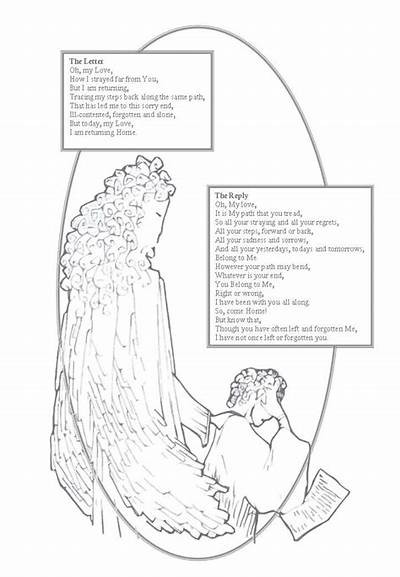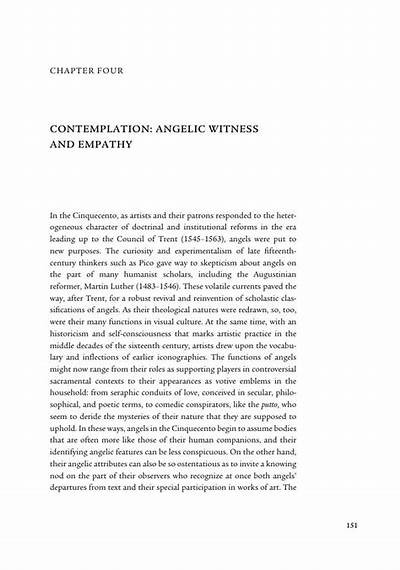- willbt
- tai the toad
- Exploring the Contrast Between Angels and Sinners in Pragmatic Perspectives on Morality
Exploring the Contrast Between Angels and Sinners in Pragmatic Perspectives on Morality
Published:2025-09-29Edit:OrisVies(3413)
The exploration of morality often leads to profound debates about the nature of good and evil, angels and sinners. Though traditional views may categorize beings into fixed domains—angels symbolizing purity and righteousness, while sinners embody temptation and wrongdoing—pragmatic perspectives invite a more nuanced understanding. This article delves into the complexity of morality, contrasting angels and sinners through pragmatic lenses, discussing how context, circumstances, and the human experience shape our definitions of moral behavior and ethical understanding.

Angels, as often depicted in religious and cultural contexts, embody ideals of virtue, benevolence, and selflessness. They are seen as intermediaries between the divine and humanity, guiding individuals toward righteousness. However, the exploration of angels goes beyond mere symbolism; it serves as a reflection of society's aspirations and moral ideals. The pragmatic perspective seeks to understand how these ideals manifest in everyday life and influence human relationships.

In practical terms, the angelic archetype can be associated with certain behaviors: altruism, compassion, and acts of kindness. These actions are not merely innate qualities but are cultivated through education, experience, and societal expectations. By applying a pragmatic lens, we can assess how these virtues are encouraged or discouraged within various contexts, paving the way for deeper discussions about moral frameworks in different cultures.

Conversely, the concept of sinners often serves to highlight the flaws and imperfections inherent in the human condition. Sinners represent a departure from societal norms and ethical ideals, often embodying desires that conflict with collective morality. However, a pragmatic exploration reveals that the label of "sinner" is frequently contextual and sometimes misapplied.

When examining the actions of sinners, it becomes essential to consider factors such as upbringing, societal pressures, and individual circumstances. This perspective does not excuse immoral behavior but seeks to understand the broader context that influences it. For instance, a person deemed a sinner for breaking a law may have acted out of desperation or necessity. Through a pragmatic approach, the distinction between moral and immoral behavior becomes less absolute and more complicated by external influences.

One of the significant aspects of pragmatic perspectives on morality is the recognition of gray areas. Rather than strictly categorizing individuals as angels or sinners, this approach acknowledges the complex spectrum of human behavior. Each action, whether perceived as virtuous or sinful, is subject to interpretation based on various factors, including cultural norms, individual beliefs, and situational circumstances.
For example, an act of kindness may be motivated by a desire for recognition rather than selflessness, while an act deemed immoral might stem from protective instincts or a need for survival. These nuances challenge rigid moral classifications and encourage a more compassionate understanding of human behavior. Emphasizing empathy and context can bridge the divide between angels and sinners, fostering a more inclusive moral dialogue. The Role of Intention in Morality
The role of intention in assessing moral actions is another critical aspect of pragmatic morality. While the outcomes of actions are essential, the motivations behind them can significantly influence moral judgments. Angels may be celebrated for their good deeds, but if their intentions are self-serving, it raises questions about the authenticity of their virtue.
On the other hand, sinners may commit wrongful acts, but if their intentions stem from a place of compassion or self-sacrifice, one might argue for a reevaluation of their moral standing. Pragmatism encourages us to look beyond actions alone and consider the underlying motivations, hence acknowledging that morality is often more about the intent than the act itself. Cultural Perspectives on Angels and Sinners
Examining the contrast between angels and sinners also involves understanding cultural perspectives on morality. Different societies have their unique interpretations of what constitutes righteous or sinful behavior. For instance, behaviors considered virtuous in one culture may be viewed as sinful in another, highlighting the subjective nature of morality.
This divergence underscores the importance of cultural context in moral discussions. Through a pragmatic lens, individuals are encouraged to engage with diverse perspectives, fostering a deeper understanding of the intricate web of morality that transcends simplistic binaries of angels and sinners. Implications for Moral Education
Given the complexities of morality and the distinctions between angels and sinners, the implications for moral education are profound. Traditional approaches often rely on the dichotomy of good versus evil; however, a pragmatic perspective advocates for a more holistic education that emphasizes critical thinking, empathy, and understanding of context.
Incorporating pragmatic principles in moral education can empower individuals to navigate moral dilemmas more effectively, promoting a deeper understanding that goes beyond superficial judgments. This approach nurtures a generation that recognizes the fluidity of moral behavior, fostering compassion and a commitment to ethical reasoning. Conclusion
In conclusion, the exploration of the contrast between angels and sinners through pragmatic perspectives on morality reveals the complexity and nuance of human behavior. By emphasizing the significance of context, intention, and cultural perspectives, we can foster a deeper understanding of morality that transcends rigid classifications. This journey invites us to reflect on our moral beliefs and encourages empathy toward the diverse spectrum of human experience.
Tags
Hots
- Uncover Treasure with Hacksaw Gaming Mines: A Thrilling Adventure
- How to Easily Access Lucky Willbet Slot Login for a Fun Gaming Experience
- Experience the Thrills and Challenges of the Cursed Seas Demo Adventure Game
- Exploring Novo Games: The Ultimate Guide to Innovative Gaming Experiences in 2023
- Exploring the Profound Insights and Timeless Wisdom of Athena in Ancient Philosophy
- Discover No Deposit Real Money Bonuses at Merkur Online Casino Today
- Exploring the Adventures and Lessons from the Diary of a Wimpy Kid Cheese Touch Book
- Guide to Downloading the WillBet App for iOS Devices: Step-by-Step Instructions and Tips
- Experience Real-Time Action with Willbet Soccer Live Updates and Features
- Discover the Exciting Interwetten Bonus Offer of 11 Euros for New Players
FriendLinks
- 1、Discover the Exciting World of Onabet Casino: Your Ultimate Guide to Gaming Fun and Rewards
- 2、Unlock Unlimited Money in Crew 2 with Beta Unlock Clubs for Fun and Gameplay Enhancements
- 3、In-Depth Review of Cursed Crypt Slot: Features, Gameplay, and RTP Analysis
- 4、Unlock Exclusive Offers with Interwetten Promo Code for Maximum Betting Value
- 5、Pepe NFT Listing Date and What You Need to Know About it
- 6、"Willbet Sports Betting - Your Premier Destination for Sports Wagering"